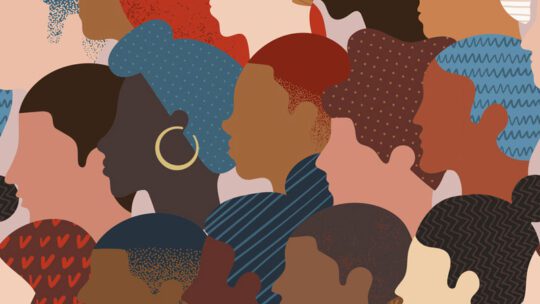
This month has been one of reflection. Three years ago, I founded The Sway Effect to do something different–challenge how our industry works–and frankly, create a place where I wanted to work.
Before that, I saw much more could be done more intentionally. Many of the teams I worked on were unrepresentative of the companies we were serving.
For instance, we’d be in a room brainstorming for a product geared toward Black women. Yet nearly everyone at the table was white and male. There was absolutely no representation.
I wanted to do better, create a company that put diversity, equity, and inclusion (DEI) at its center. Insuring an equal playing field makes all of us are better because we recognize our differences.
Three years later, it’s working. Why?
Good work and a DEI lens
Companies we advise are purpose-driven. Their goals include impactful work for the betterment of society. We encourage that they make DEI a central business strategy–not an afterthought.
Within the PR, advertising, and marketing industries, DEI sometimes can come off as performative. Inclusion is sprinkled into campaigns instead of being central to them.
For example, some companies thought they could capitalize on marketing Juneteenth. It came across as tone deaf and inauthentic.
Walking the walk
Instead, success means practicing what you preach. For us, this means:
- Having a speak-up culture, creating business strategies that give everyone a voice
- Building a team inclusive of different races, sexual orientations, cultures and life experiences
Relatively, diversity is the easy part. It requires recognition and an understanding that not everyone is like you.
Inclusion is harder. It requires action.
Equity is hardest. It not only requires action but tangible change.
PR pros should view their value-add as helping companies realize they must make DEI a central part of the business. Unless DEI is at the core of how a company operates, you won’t see much of a difference.
For example, giving everyone a voice exists only when the C-suite buys in and cascades this belief down throughout the company. This is, in part, why you must counsel companies that diversity and inclusion leaders within brands report to the CEO.
Creating metrics and measuring
In addition, we believe PR agencies must set the wheels in motion to accomplish DEI goals with companies they advise.
Moreover, each unit must set metrics and measure their DEI goals.
PR should advise or help provide tools that help companies know how they are doing and where they can improve. As such, we created a tool called the DEI Barometer.
The Barometer an AI-backed platform that helps measure how DEI initiatives are resonating with audiences. The tool helps uncover insights and make decisions against the pillars of sexual identity, race and ethnicity, gender, age, class and disability. With data available in real-time, businesses can better shape how they communicate to their diverse mix of stakeholders.
Business case
It’s a given that DEI is not only the right thing, but is good for business. Indeed, companies with strong DEI we advise improved employee sentiment and grew 30x more in organic engagement than their competitors. Most important, these companies secured support of senior leadership and continue to drive change.
I am here because someone saw something in me and gave me a voice. I’m focused on returning that sentiment and empowering people, giving opportunity, creating inclusion and speaking up for them.
I try to advocate and help set up people for success and give them opportunities that maybe they wouldn’t have had. Hopefully, this gives them the confidence that they can do things and try things differently.
Change starts from having the courage to say no or the bravery to act. So, cheers to the next three years of continuing to act. And happy birthday, The Sway Effect!
Jennifer Risi is founder and president of The Sway Effect
[Editor's Note: The writer’s views do not necessarily reflect those of PRNEWS. We invite opposing essays from readers.]
